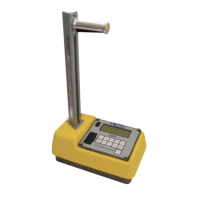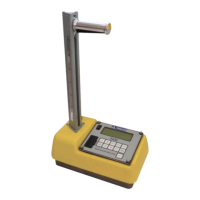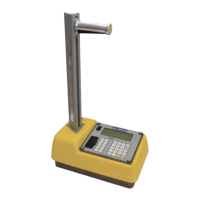MOISTURE
The Model 3430 gauge uses a 40 mCi (1.48 GBq) americium-
241:beryllium neutron source to measure the hydrogen content
(consequently the water content) of the material. The 3430-M gauge
employs a 60 µCi (2.22 MBq) californium-252 source.
Neutrons emitted by the Am-241:Be (or Cf-252) source penetrate
the material and are thermalized (or slowed). Thermalization is the
process where neutrons are slowed to the point where further
collisions with hydrogen or other materials will not continue to slow
the neutron.
The 3430 gauge contains a helium-3 neutron detector that is
sensitive to thermalized neutrons. This detector is insensitive to
non-thermalized, or “fast” neutrons and, as a result, the counts
obtained are directly proportional to the amount of
hydrogen/moisture present in the material.
The depth of measurement, or depth at which 98% of the counted
neutrons pass before reaching the detector, is a function of moisture
content:
Depth (inches) = 11 – (0.17
×
M), where: M = moisture in pcf
or
Depth (mm) = 280 - (0.27
×
M), where: M = moisture in kg/m
3
Therefore, the higher the moisture content in the material being
measured, the smaller the depth of measurement. The normalized
curve set shown in Figure 2-4 illustrates the effect of moisture
content on the depth of measurement.

